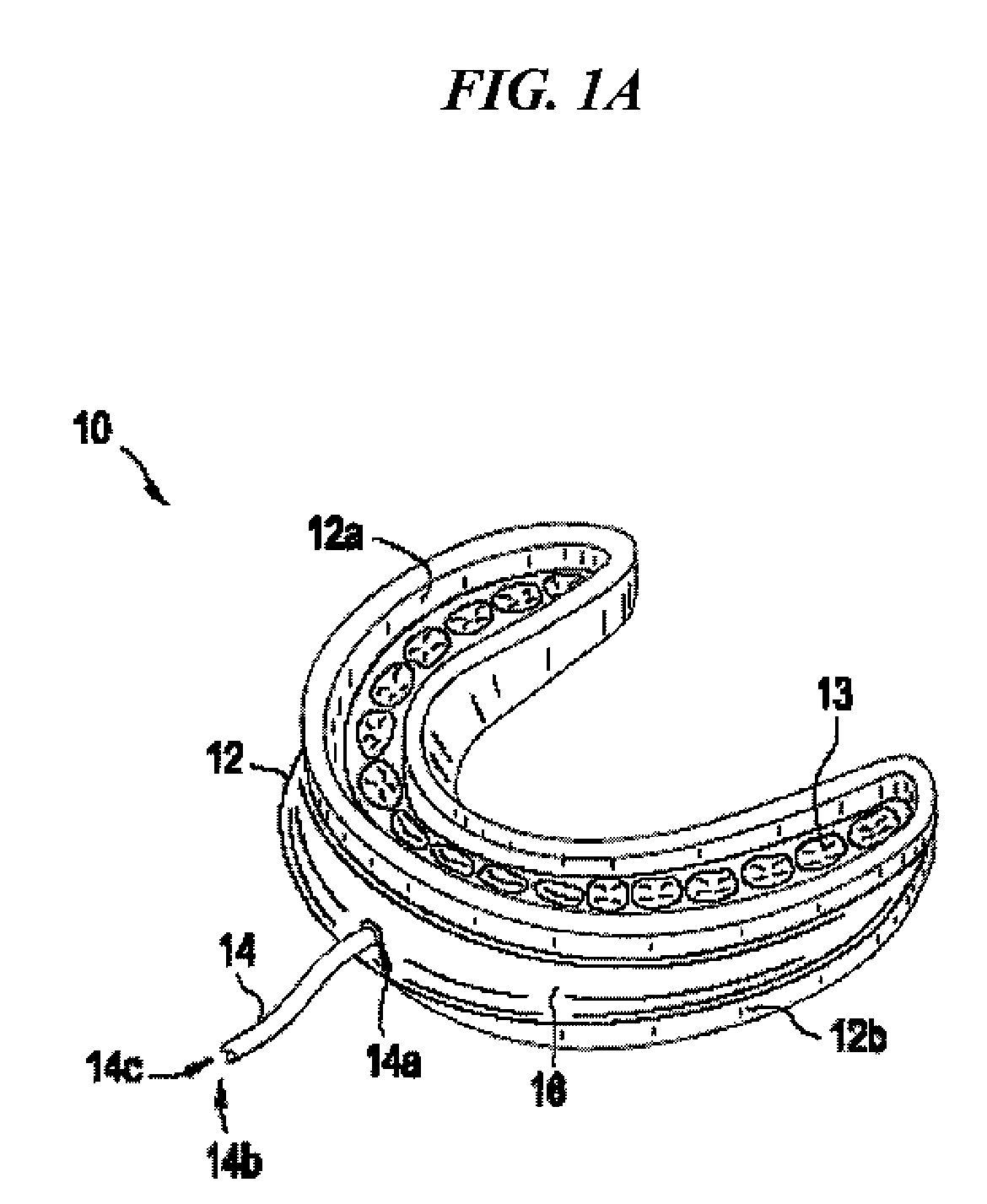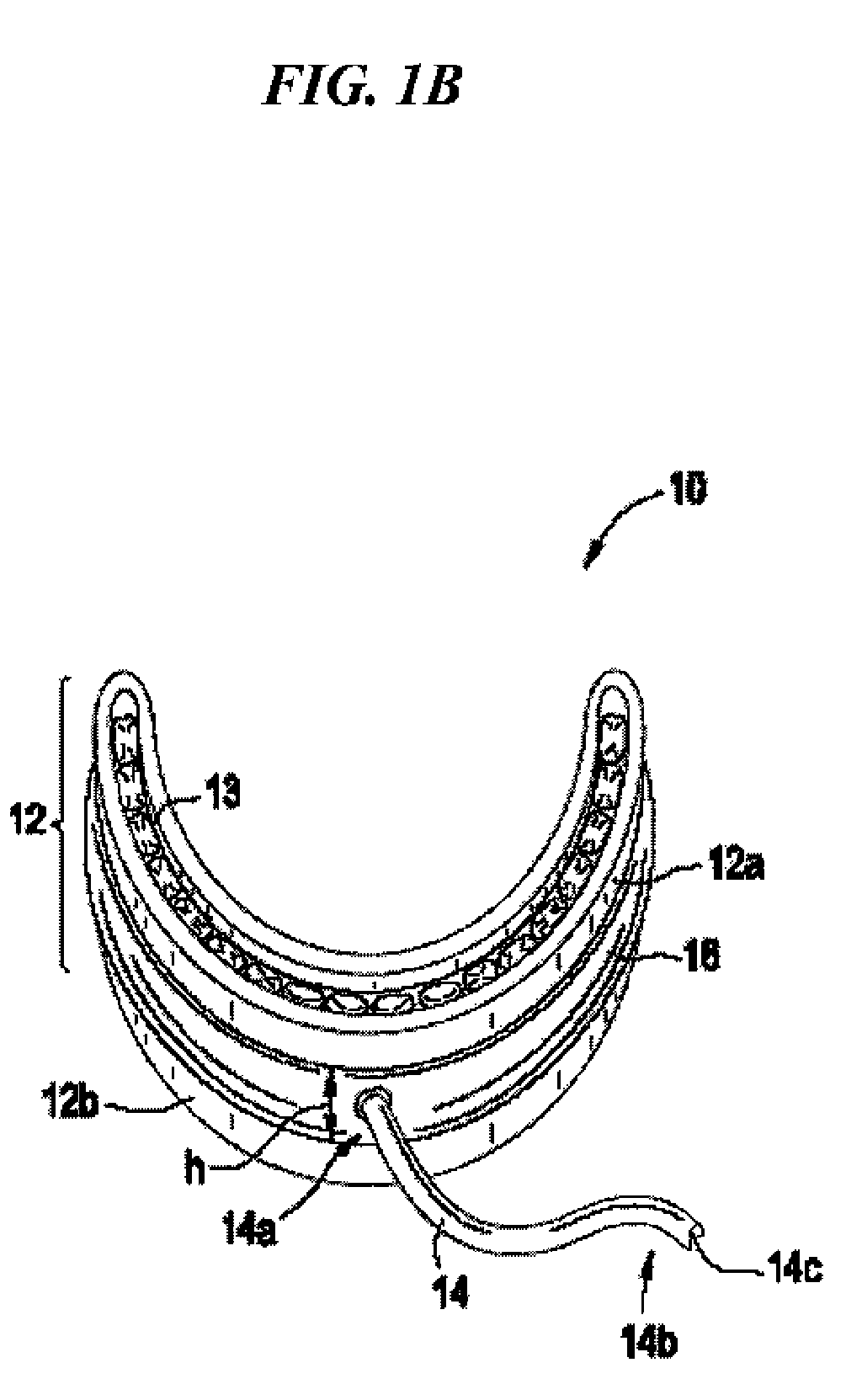Methods and devices for maintaining an open airway
a technology of airway and airway, applied in the field of methods and devices for maintaining an open airway, can solve the problems of inability to sleep, difficulty in exhaling, and frequent suffering of cpap users
- Summary
- Abstract
- Description
- Claims
- Application Information
AI Technical Summary
Benefits of technology
Problems solved by technology
Method used
Image
Examples
Embodiment Construction
[0025] The present invention provides a non-invasive remedy for maintaining an open airway in a patient. The methods and devices can be adapted to prevent an obstruction in an airway and / or they can be adapted to relieve an obstructed airway when an obstruction occurs. The methods and devices are particularly advantageous for use with patients who suffer from snoring and / or OSA, or for patient's undergoing sedation or general anesthesia or other medical procedures in which it is necessary to maintain an open airway. In general, when a human, referred to herein as a patient, is sleeping or is otherwise unconscious, the soft tissues, such as the tongue, may fall against the posterior wall of the pharynx, thus blocking the air passageway. The present invention thus provides methods and devices that are effective to generate a negative pressure in the patient's mouth to pull or maintain the patient's soft tissues up and away from the posterior pharyngeal wall, thereby removing the obstr...
PUM
 Login to View More
Login to View More Abstract
Description
Claims
Application Information
 Login to View More
Login to View More - R&D
- Intellectual Property
- Life Sciences
- Materials
- Tech Scout
- Unparalleled Data Quality
- Higher Quality Content
- 60% Fewer Hallucinations
Browse by: Latest US Patents, China's latest patents, Technical Efficacy Thesaurus, Application Domain, Technology Topic, Popular Technical Reports.
© 2025 PatSnap. All rights reserved.Legal|Privacy policy|Modern Slavery Act Transparency Statement|Sitemap|About US| Contact US: help@patsnap.com



